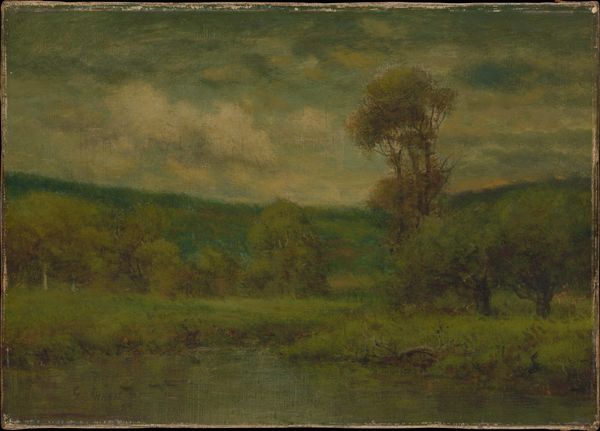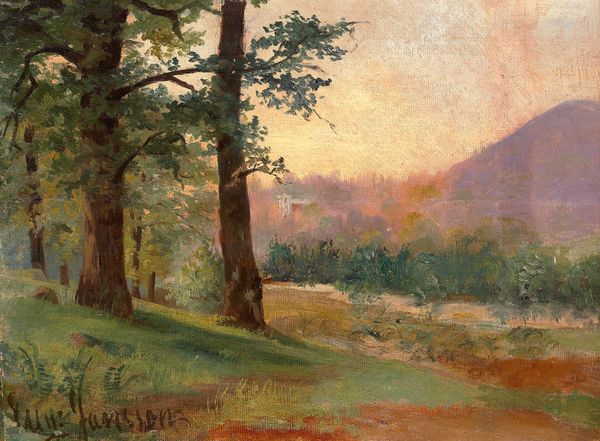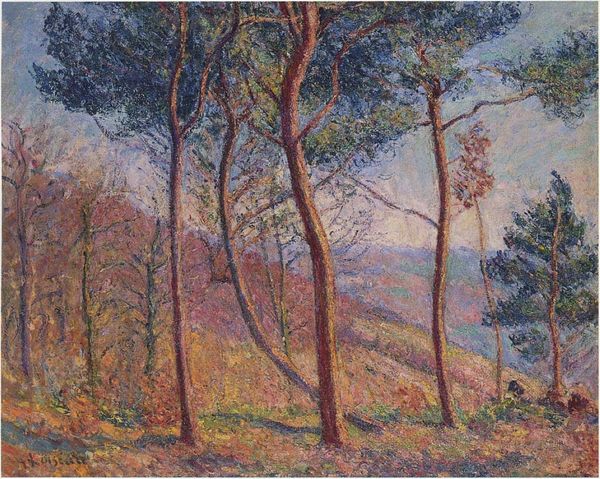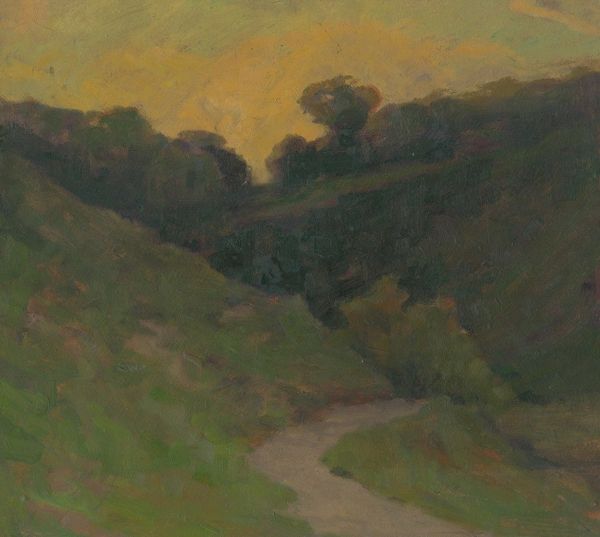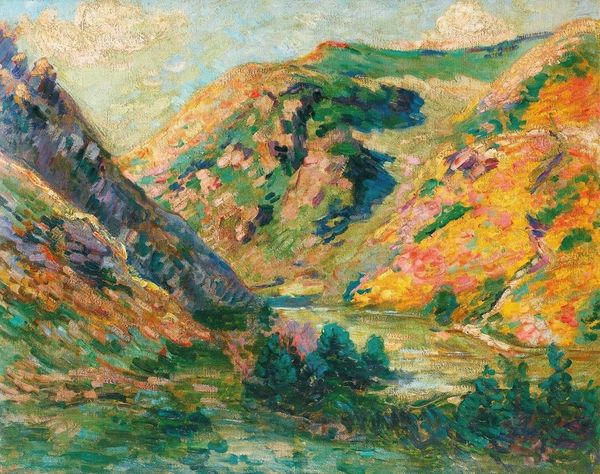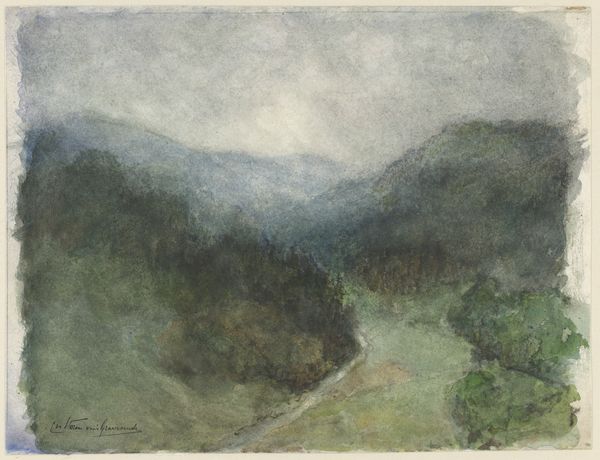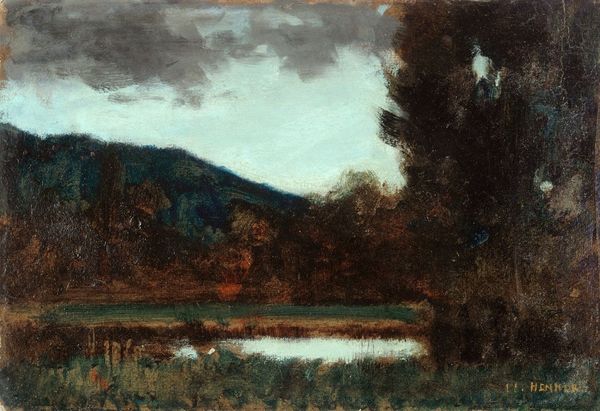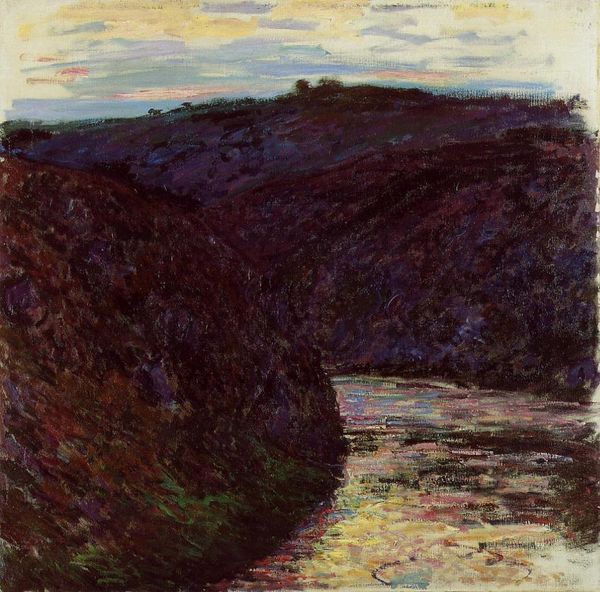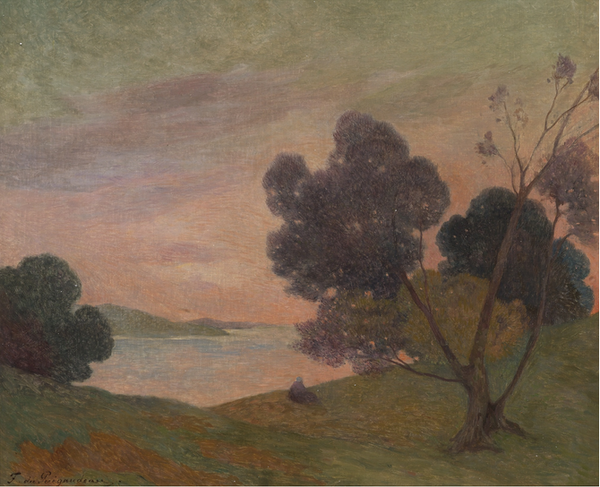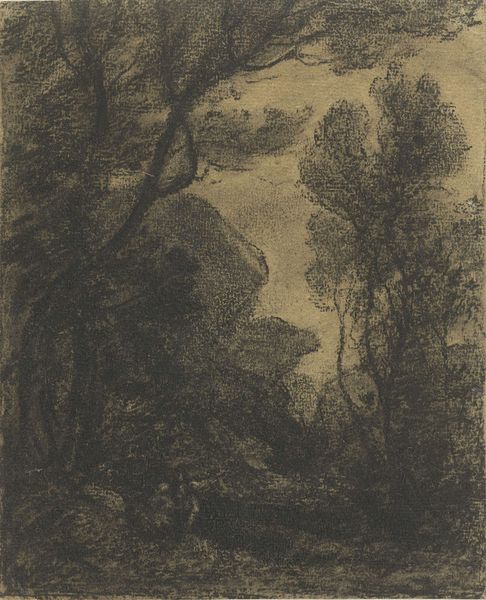
Copyright: Public domain US
Curator: The prevailing mood seems quite somber, even melancholic, despite the title suggesting vibrant greenery. Editor: This is Auguste Herbin’s “Green Landscape,” created around 1901 using oil paints, capturing the spirit of plein-air painting popular at the time. I see a deeper story here about how environments affect people, reflecting broader shifts in artistic consciousness. Curator: I can appreciate the broad strokes—literally and figuratively. Herbin seems less concerned with specific details and more invested in creating an overall feeling or symbolic resonance, don't you think? Note the almost primordial feel with the tree against the mountain. Editor: Precisely, though that feeling has much to do with who was experiencing these paintings at the turn of the century, during a time of enormous change in both France and beyond. Impressionism captured moments and social dynamics, but also served to underscore class hierarchies and social status for leisure. What meaning did landscapes convey when only some had access to nature? Curator: An excellent question that makes me consider it again. When I view it considering a restricted point of view and historical hierarchy it feels less like leisure and more like an ominous premonition. Editor: The formal language is telling here. Herbin would move on to more purely abstract work eventually. Considering the visual elements, this landscape feels laden with an ambiguity about our role within natural and artificial constructs. The reflection on the water creates a barrier, so who is meant to participate in its verdant tranquility? And, who is meant to be excluded? Curator: Absolutely. So many times nature as an artistic motif appears to promote this elitist view, something romanticized to mask the dispossession of those unable to engage with it, creating almost a cruel paradox of inclusion and exclusion in pictorial form. Editor: Yes, the history is anything but innocent. It really allows me to reconsider how something presented so passively really contains commentary. Curator: A powerful visual paradox indeed, making Herbin’s landscape much more than just an aesthetic pleasure. Editor: It is a historical snapshot loaded with aesthetic and social implications that carry through to this day.
Comments
No comments
Be the first to comment and join the conversation on the ultimate creative platform.

